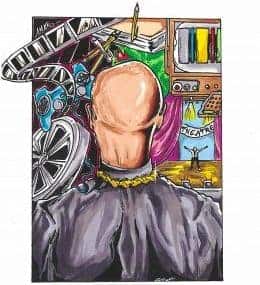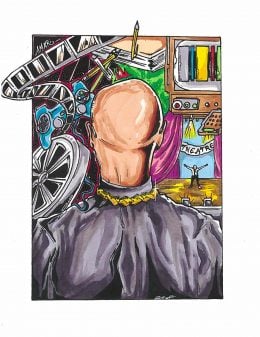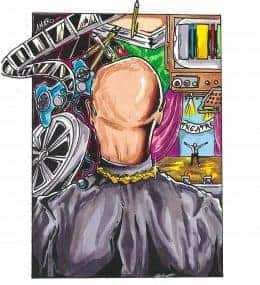Floyd Norman: An Animated Life – Overview/ Review (with Spoilers)
Overview Representation matters and as Viola Davis said, though more geared toward women of color, the only thing which separates people of color, or in this case Black people, from everyone else is opportunity. But in Floyd’s case what separates him from everyone else wasn’t just opportunity but hard work. Which, into his 80s, is…

Spoiler Alert: This summary and review contains spoilers.
Additionally, some images and text may include affiliate links, meaning we may earn a commission or receive products if you make a purchase.
Overview
Representation matters and as Viola Davis said, though more geared toward women of color, the only thing which separates people of color, or in this case Black people, from everyone else is opportunity. But in Floyd’s case what separates him from everyone else wasn’t just opportunity but hard work. Which, into his 80s, is what he gives Disney, Pixar, and the industry of animation.
Trigger Warning(s):
Depiction of Watts Riot
Main Storyline
Though his career started in 1956, Floyd Norman’s love of animation and drawing began with Dumbo, was cultivated by Floyd’s grandmother, became a career thanks to a science teacher and became his life’s work under the watchful eye of Walt Disney and his famous Nine Old Men. From there, it was all about opportunity. Opportunities which spanned from working in different departments within Disney, as well as Hanna-Barbera, and even beginning his own company, Vignette Films, with Leo Sullivan and a few others. However, Disney was and always will be home. Walt Disney, despite rumored faults, would always be a father figure, and retirement will never be a realistic option.
But, at 65, it seems Disney made it his only option. For, you see, this movie isn’t just about Floyd’s professional life, it is also about ageism in the industry, a bit about the politics of the entertainment business, and it even touches on Floyd’s personal life. Be it his first marriage and how that ended, or his new marriage to Adrienne which seems like a better match for him. Not to forget, the movie featuring his 5 children from his first marriage and, alongside quite a few cartoons, depicting the highs and lows of Floyd’s life. All the while famous people like Whoopi Goldberg to many heavyweights in animation help fill in the details of an animated life.
Things To Note
Some of his most notable work: The Sword and the Stone (as an in-betweener), working on Sleeping Beauty, with a focus on the 3 fairies, assistant animator for Mary Poppins, filmed the footage NBC used for the Watts riots, did the animation for the Soul Train logo, wrote and took part in the animation for shows like Jonny Quest, Scooby-Doo, Josie and the Pussycats, Richie Rich and so many others.
Highlights
Since I was young my father has spoken about knowing your history. However, like someone said in the movie, when it comes to animation and art in general, that isn’t taught much in school. You may learn how to draw and paint maybe, but art history is an elective and names like Floyd Norman and his contemporaries may not be at the top of the list of names you’ll learn. So this film becomes a bit of a crash course.
Mind you, outside of Floyd and partner Leo Sullivan, there aren’t many standout Black animators noted, however, there are many others who Floyd either mentored or worked with and they all comment on his life and the business. In fact, there are so many who were involved in this production that I was thankful that unlike some documentaries, they kept repeating a subtitle of who is who.
But really, one of the big highlights to me, outside of learning about Floyd’s life, is the animation chosen to illustrate different parts of Floyd’s life. All of it helps bring out the expressive side to the reserve Floyd and whether it is his own work or others, some of it makes you giggle like a kid and others help you understand his frustrations which, outside of a handful of scenes, he may verbally say he was mad about something but his face looked as calm as an owl.
Leaving us with a movie which, overall, doesn’t really have any low points or anything to be on the fence about. It covers his life and work, the frustrations which come from working in an industry in which once a project ends there is the constant threat of being fired, leading you to work in multiple departments or even for competing studios, and even going out on your own. It also covers his personal life, be it his marriage or relationship to his kids, and while Disney is praised and will always be the company it all started at, he doesn’t present the House of Mouse as always this utopia. Between the ageism he accuses them of which lead to his career there temporarily ending at 65 to racism when he was hired originally, he shows the studio does have its flaws. But, despite that, the acknowledgment of his worth as an animator there means the world to him. So, as flawed as the place can be, it will always be his home away from home.
Follow/Subscribe To Our External Pages
- Plot and Dialog - /100
- Character Development and Performances - /100
- Visuals and Sound - /100
- Pacing - /100
- Value For Intended Audience - /100

